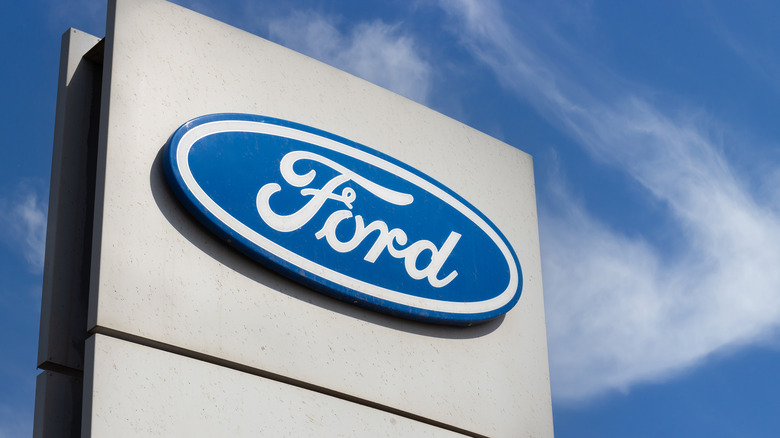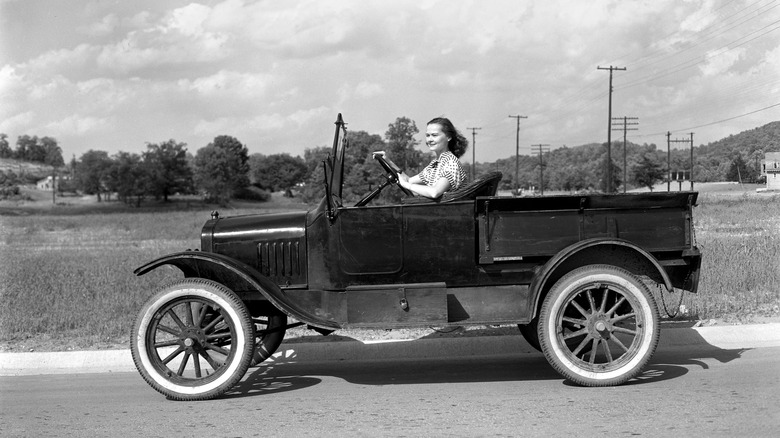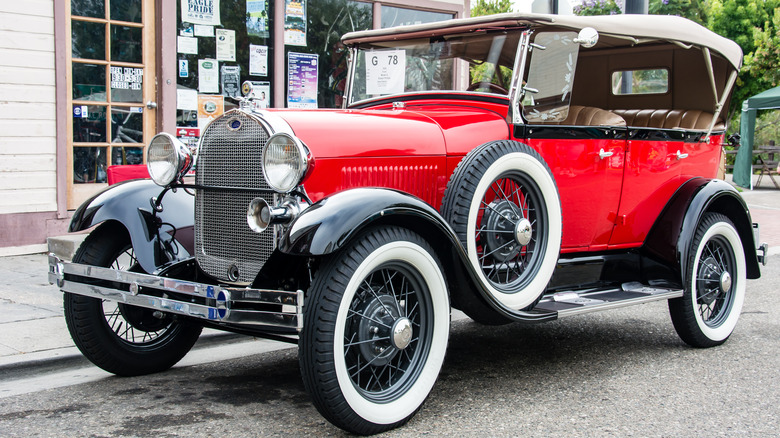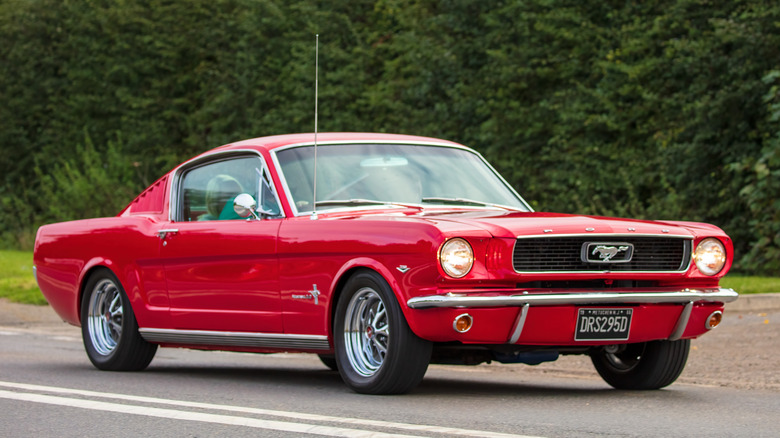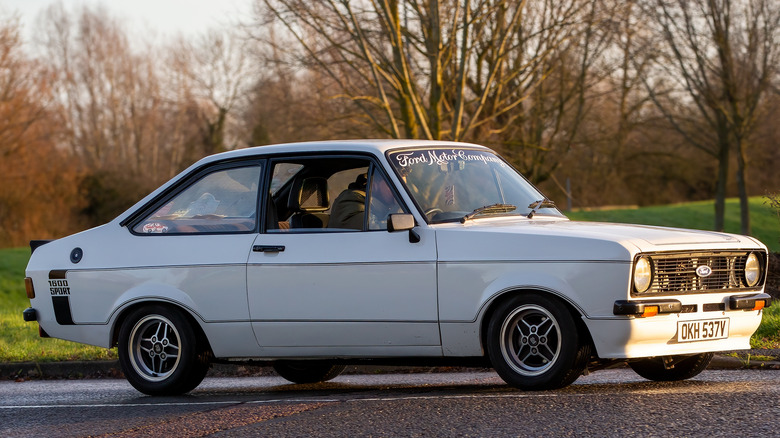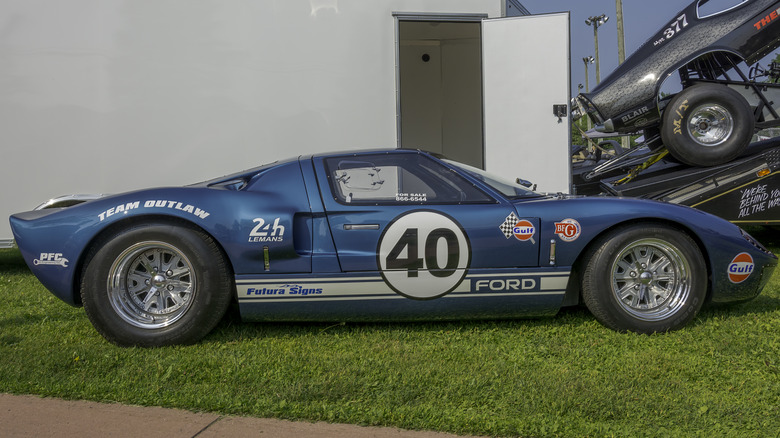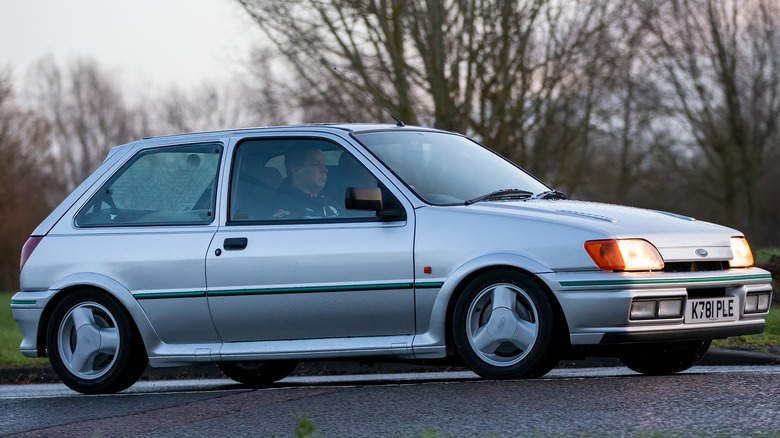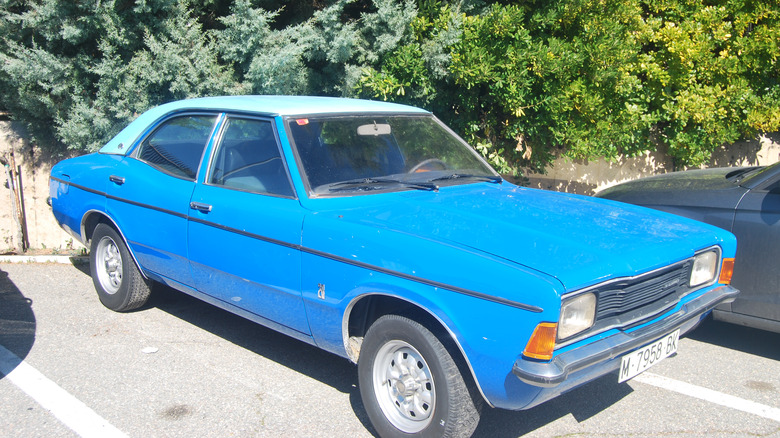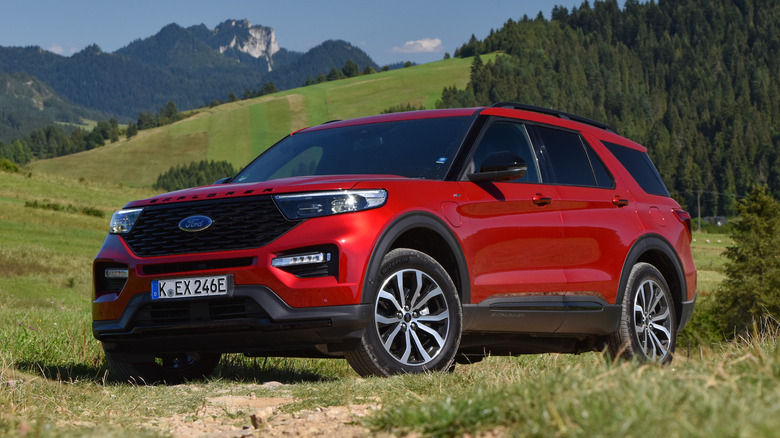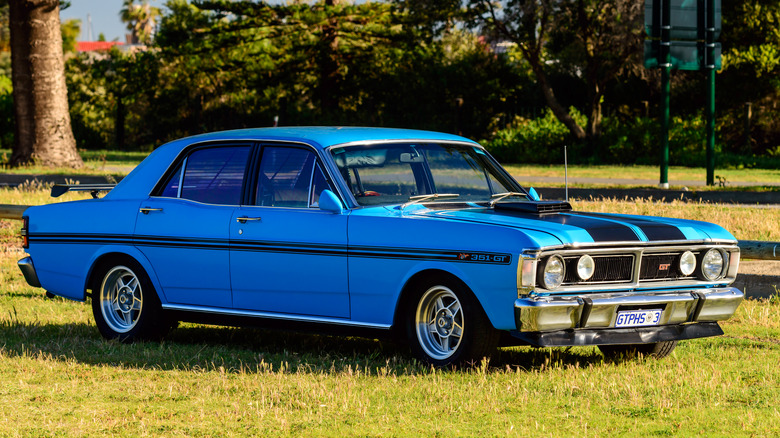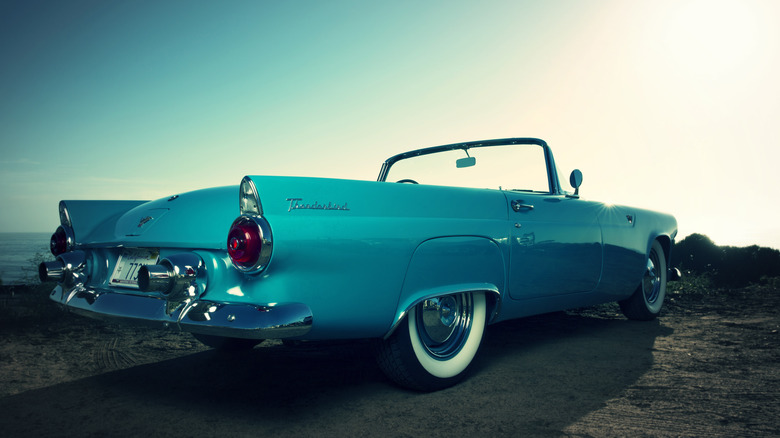10 Of The Most Successful Models In Ford History
Ford's history is a treasure trove of iconic vehicles, with each one leaving its mark in a big way. Whether it's through groundbreaking innovations, impressive sales figures, triumphs on the race track, or significant cultural influences, Ford has proven its metal time and again. Here, we're exploring a list of 10 Ford models that stand out as particularly successful. Each of these cars has been chosen for its own unique contribution to the brand's legacy.
Ford's lineup is diverse — from the Model T, which set the standard for mass-produced vehicles, to modern-day icons like the Mustang, which has captured the hearts of car enthusiasts for generations, and beyond. This list isn't just about the numbers — it's about the stories these cars tell and the impact they have had on both the industry and our lives. They represent innovation, evolution, and sometimes, revolution. Let's gear up and take a closer look at each of these models to understand what makes them not just successful, but legendary.
Ford Model T (1908-1927)
We start off our list with the Ford Model T — a true icon in automotive history and often credited with revolutionizing the industry. Introduced in 1908, it was the first car to be mass-produced using assembly line techniques — a method pioneered by Henry Ford himself. This innovative approach not only sped up the manufacturing process significantly but also drastically reduced costs. As a result of this, the Model T became affordable for the average American — effectively putting the nation on wheels.
An interesting fact about the Model T is that before it hit the market in 1908, Henry Ford and his engineers had crafted about 20 prototypes, each named with a different letter. By the time the company reached the name "T," it had perfected a blend of durability, reliability, and simplicity.
What made the Model T particularly successful was its reliability and sheer simplicity. It was designed to be easy to drive and cheap to repair. This resonated well with city dwellers and rural farmers alike. The car was used for everything from daily commuting to more rugged tasks on farms.
The Model T fostered the growth of car culture in the United States. With over 15 million units sold by the time production ended in 1927, its widespread availability and affordability contributed to the development of infrastructure like roads and highways.
Ford Model A (1927-1931)
The Ford Model A rolled out in 1927 and had a tough act to follow in the legendary Model T. In spite of the pressure, it soared quickly to success — thanks to a mix of improved features and a strategic marketing push that caught the public's attention.
Unlike its predecessor, the Model A was available in an array of colors, rather than "any color so long as it's black," as Henry Ford famously said about the Model T. This choice was a hit, and allowed buyers to personalize their purchases. The Model A also introduced technical improvements, like a more powerful engine and the addition of conventional driver controls and safety features, which were modern for the time.
The introduction of the Model A was an event in itself. Ford created a massive buzz around its release. It paused the production of the Model T to retool the factory, which built anticipation. When it finally debuted, people were so eager to see it that police were called to manage the crowds at Ford showrooms.
Ford's approach paid off with over 4 million units sold by the time production ended in 1931. The Model A is not just remembered for its sales numbers but also for marking Ford's transition into a more modern automaker. During a time of significant change, it was in many ways the model that helped Ford maintain its role in the early automotive industry.
Ford Mustang (1964-present)
Introduced in 1964, the Ford Mustang didn't just succeed, it became a cultural icon. The Mustang was about style, power, and accessibility, packaging the allure of a sports car in a way that was affordable for the average American.
One of the coolest things about the Mustang was how it tapped into the vibrant youth culture of the 1960s. It was sleek, sporty, and came with enough customization options to make any car enthusiast drool. The timing of the Mustang's introduction couldn't have been better, as it coincided with the rise of the Baby Boomer generation — a massive group eager to express their individuality. Described as "the perfect car at the perfect time," the Mustang fulfilled the desire to have a vehicle that felt uniquely your own.
The Mustang also made its mark in the media. It's been featured in countless movies and TV shows, most famously perhaps in the 1968 film "Bullitt," where Steve McQueen drove a 1968 Mustang GT in one of the most iconic car chases ever filmed. This not only solidified the Mustang's cool factor but also cemented its place in American pop culture.
Beyond its swagger and screen time, the Mustang has maintained strong sales throughout its history. It has evolved with time to include modern tech and more powerful engines while still retaining its signature style. That adaptability is a big part of why it remains popular decades after it first hit the market.
Ford Escort (1968-2004)
The Ford Escort was first introduced in 1968, and while it might not grab headlines like the Mustang, its impact is just as significant. This compact car offered reliability and affordability, which made it especially popular among everyday drivers looking for practical transportation.
One of the key reasons for the Escort's success was its versatility. Available in various body styles, including hatchbacks, sedans, and wagons, it catered to a wide range of needs, from family cars to economical business vehicles. This adaptability helped it gain a strong foothold in markets around the world, not just in the U.S. but also in Europe, where it became hugely popular.
The Escort also made notable strides in the world of motorsport. Its performance versions, particularly the Escort RS1600 and RS2000, were incredible rally machines. They dominated competitions throughout the 1970s. This racing pedigree gave the Escort a sporty edge that appealed to those who desired both practicality and a bit of fun.
In spite of its humble image, the Ford Escort's reliability and affordability kept it in production for more than four decades. The continuous updates and improvements also kept it competitive. By the time production ended in 2004, it had firmly established itself as one of Ford's most successful models ever.
Ford GT40 (1960s)
The Ford GT40 is a bit of a legend in the car world, and for good reason. Born out of a fierce rivalry with Ferrari in the 1960s, the GT40 wasn't just a car — it was Ford's statement of intent to dominate at the high-stakes Le Mans 24-hour race.
What makes the GT40's story so compelling is its underdog beginning. Initially, Ford tried to buy Ferrari, but when that deal fell through, Henry Ford II decided if he couldn't buy success, he would build it. Enter the GT40 — a car designed with the sole purpose of beating Ferrari on the race track. And beat Ferrari it did — not just once, but four consecutive times at Le Mans from 1966 to 1969. If you've seen the 2019 film "Ford v Ferrari," this story will be pretty familiar.
The GT40's appeal isn't just about its racing success. Its design was groundbreaking — the GT40 was only 40 inches tall. With its sleek low profile and powerful V8 engine, it looked and performed unlike anything else on the track.
These achievements made the GT40 a symbol of performance and victory. It cemented its place not only in racing history but also in the hearts of car enthusiasts around the world. Today, the GT40 remains a prized collector's item, revered for its historical significance and its role in shaping the automotive landscape of the 1960s.
Ford Fiesta (1976-2023)
The Ford Fiesta was first introduced in 1976, and quickly became one of Ford's best-selling models globally — it's easy to see why. It found its niche as a practical, affordable, and fun car, which made it a hit, especially in Europe where small cars are in high demand.
The Fiesta's success can largely be attributed to its adaptability. Over the years, it evolved with changing consumer tastes and technological advancements. Each new generation brought something fresh — from more efficient engines to the latest in connectivity and safety features. This ability to adapt kept the Fiesta relevant and appealing to a broad audience.
The Fiesta also had a sporty side. The ST versions were known for their punchy performance and sharp handling. These were particularly popular among those who wanted a bit more thrill in their daily drive. This dual character helped the Fiesta cater to both practical buyers and enthusiasts. Throughout its production run, the Fiesta remained a strong contender in the competitive subcompact car segment. It offered a balance of quality, affordability, and driving enjoyment that few could match.
While it was incredibly popular in Europe, the Fiesta also made its mark in various other markets around the world — including North America and Asia. However, by 2023 changing market dynamics and a shift toward SUVs and electric vehicles led Ford to end of the Fiesta's production. Nonetheless, its legacy as a versatile and beloved model in Ford's lineup is undeniable.
Ford Taurus (1985-2019)
The Ford Taurus was introduced in 1985, and it really shook things up in the automotive world. It differed dramatically from the boxy shapes typical of American cars at the time. The sleek and more aerodynamic profile of the Taurus not only set new design trends but also improved fuel efficiency, which was a big deal for consumers.
The Taurus also helped the company reestablish itself as a leader in innovation and customer-focused design. It was spacious, comfortable, and packed with advance features for its time, like integrated control panels and high safety ratings. This broad appeal helped it become one of the best-selling cars in America throughout the late 1980s and 1990s.
An interesting tidbit about the Taurus is its role in pop culture and government. It was often the car of choice in many TV shows and movies during the 1990s, and it was also popular among law enforcement agencies.
The production ended in 2019 as consumer preferences shifted toward SUVs and trucks. The Taurus remains a significant model in Ford's history for its contribution to automotive design and its role in defining family sedans for nearly three decades.
Ford Explorer (1990-present)
The Ford Explorer debuted in 1990, and very quickly became a staple on American roads. It marked its place as one of the pioneering SUVs that captured the public's interest in this vehicle category. The Ford Explorer blended the ruggedness of an off-road vehicle with the comforts of a passenger car. This made it an ideal choice for families and adventure-seekers.
The Explorer offers the space and capability that many American consumers look for in a vehicle. With seating for up to seven passengers and a roomy cargo area, it's been a practical choice for everyday commutes and road trips. Its towing capacity has also made it a favorite among those who need to haul trailers or boats.
Safety features have also played a big part in the Explorer's appeal. Over the years, Ford has equipped the Explorer with the latest safety technology, earning good safety ratings and reassuring buyers looking for a family-friendly vehicle.
Even though the Explorer faced competition and got wrapped up in the Ford-Firestone safety nightmare that resulted in a recall of millions of tires in the early 2000s, it has managed to remain a strong seller, evolving with new designs and technologies to meet modern demands. Its long-standing presence in the market is a testament to its enduring appeal.
Ford Falcon (1960-2016)
The Ford Falcon debuted in 1960 and was Ford's answer to America's growing interest in smaller and more economical cars during that era. It enjoyed a successful run for many years, and its appeal wasn't just confined to the U.S. The Falcon found a particularly enthusiastic market in Australia, where it became a cultural icon.
The Falcon was truly versatile. It came in several body styles that included sedans, wagons, and even convertibles, which helped it cater to a broad audience. This flexibility meant that whether you were a family needing a reliable daily driver or someone looking for a budget-friendly yet comfortable car, the Falcon had an option for you.
From its inception in the early 1960s to the end of its production in 2016, the car found lots of different uses. The Falcon was widely used for police and taxi services as it was known for its durability and reliability. The performance versions, particularly the Falcon GT, became legends on the racetrack and are still celebrated in the muscle car community today. In Australia, the Ford Falcon was more than just popular — it became a symbol of the nation's automotive culture.
The Falcon's production run left behind a legacy of reliability, versatility, and a touch of performance, making it one of Ford's most successful and beloved models.
Ford Thunderbird (1955-1997, 2002-2005)
The Ford Thunderbird hit the scene in 1955 and it quickly became a standout as Ford's answer to the sporty and personal luxury car market which was just beginning to take shape. This car was less about racing and more about cruising in style and comfort.
Affectionately known as the "T-Bird," the Thunderbird was initially introduced to compete with the Chevrolet Corvette, but it shifted its focus toward luxury rather than outright sportiness. This turned out to be a masterstroke. The move broadened its appeal, attracting those interested more upscale features.
Over the years, the Thunderbird saw several transformations, from its roots as a two-seater to larger, more luxurious models. Each generation kept the brand fresh and interesting as it brought something new to the table. One of the most notable versions was the 1961 model, which introduced rear seats and a more refined futuristic look.
Interestingly, the Thunderbird had a brief revival from 2002 to 2005. Ford's unexpected 11th generation car was a remake of the original two-seater coupe convertible and was dubbed the "Retro Bird." The T-Bird reboot didn't last long, selling only around 68,000 units over three years, before Ford discontinued it.
